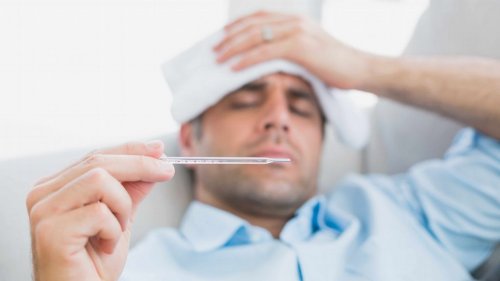Treatment for Hyperthermia Patients

The treatment for hyperthermia patients depends on the type of hyperthermia and what caused it.
Before getting into details, it’s important to know that there are different treatments for hyperthermia patients. Naturally, it’s also important to know what hyperthermia it is and the causes to have a better understanding of how to treat it.
What is hyperthermia?
Hyperthermia is the name for the set of diseases that come from unhealthy heat exposure. Essentially, it’s a body temperature regulation disorder. Typically, it involves a rise in the body’s central temperature that’s greater than 37°C or 98.6°F.
First of all, it’s important to know that a hyperthermia patient is not the same as a patient with a fever. They are different concepts. A fever is the body’s reaction to an illness. It is an immune system response that consists of raising body temperature higher than the normal temperature as a response due to an external agent.
Read this article, too: When is a High Body Temperature Considered Serious?
Hyperthermia Patients: The Causes
Hyperthermia usually occurs when the body’s protection mechanisms break down due to extreme heat.
To begin with, it’s important to know that a person may have primary hyperthermia due to exposure to excessively high temperatures. On the other hand, it may also be secondary hyperthermia if it’s caused by a previous pathology.
Overall, several causes can trigger an episode of hyperthermia.
First, the body itself may produce too much heat due to deregulated temperature mechanisms.
Also, it could be due to the surrounding temperature being high for a long time. In this case, even though thermoregulatory mechanisms of the body such as the sweat are working properly, it may not be possible to release heat into the environment.
Another cause may be a side effect of treatment with certain drugs. Among them, you can find:
- Any drugs that impact the body’s thermogenesis processes, such as corticosteroids or sympathomimetics.
- Drugs that damage or alter the tissue activity that supports thermogenesis. One example is anesthetics.
Hyperthermia may also occur due to certain metabolic or nutritional problems or any injury to the central nervous system.
Symptoms of hyperthermia
If the hyperthermia is from too much physical effort in a high-temperature environment and excessive sweating, the patient may experience muscle contractions, headaches, dizziness, nausea, and fatigue.
In the case in which a hyperthermia patient hasn’t done any physical exercise, they still may suffer from nausea and vomiting. There may also be frequent headaches, myalgia and mood swings.
Also, a series of other bodily signs may occur. Tachycardia and hypotension are common symptoms in these cases.
Also, there are skin changes. When the skin is weaker because of heat, it usually becomes pale, cold, and sweaty. However, when a patient is having a heat stroke, their skin will be red and hot. Despite these differences, dryness is usually a constant symptom.
Check out: Cases of Crimean-Congo Hemorrhagic Fever Have Been Found in Spain
Treatment for hyperthermia patients
Treatment requires cold compresses or cold baths to reduce the patient’s body temperature.
As we mentioned at the beginning of this article, treatment will depend on the cause of hyperthermia.
If the hyperthermia comes from a heat stroke, then the treatment will be split into two steps. First, the body temperature must drop. Afterward, you must treat the complications.
When it comes to the first step, it’s best to apply continuous cold compresses. You can do this submerging them in cold water, wetting the skin with cold water, or making sure you’re in a place with lots of cold air currents.
In the case that the hyperthermia comes from drugs, the treatment also consists of several steps.
First, the patient must see their doctor. They will recommend that they stop taking the drug that’s responsible for the pathological condition.
The doctor must also perform hemodynamic and analytical monitoring and help to heal the hydro-electrolytic alterations. When necessary, they may have to resort to oxygen therapy.
In other situations, the doctor may administer the drug dantrolene as a muscle relaxant.
Finally, if the hyperthermia comes from too much physical activity, then it’s crucial to stop exercising immediately. Rest in a cooler place and drink plenty of cool fluids.
All cited sources were thoroughly reviewed by our team to ensure their quality, reliability, currency, and validity. The bibliography of this article was considered reliable and of academic or scientific accuracy.
- Correia, A. de C. (2012). Hipertermia Maligna: Aspectos Moleculares y Clínicos. Revista Brasileira de …. https://doi.org/10.1590/S0034-709420120006000077
- CORVETTO A., M., HEIDER M., R., & CAVALLIERI B., S. (2013). Hipertermia maligna: ¿cómo estar preparados? Malignant Hyperthermia: How to Be Prepared? https://doi.org/10.4067/S0718-40262013000300015
- González G, C., & Ulloa B, P. (2006). Hipertermia maligna: adelantándose a las complicaciones. Revista de Otorrinolaringología y Cirugía de Cabeza y Cuello. https://doi.org/10.4067/S0718-48162006000100009
- Fernández Mas, E., Vilavella Lizana, C., Saúl Gordo, E., Sánchez Tejeda, E., & Balmont Pi, G. (2016). Golpe de calor. FMC Formacion Medica Continuada En Atencion Primaria. https://doi.org/10.1016/j.fmc.2015.11.008
This text is provided for informational purposes only and does not replace consultation with a professional. If in doubt, consult your specialist.










